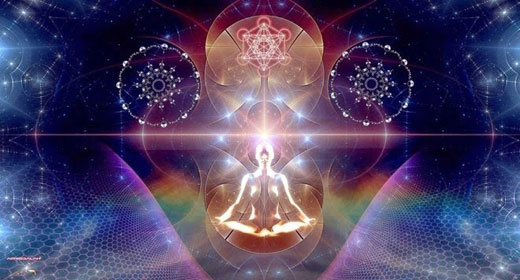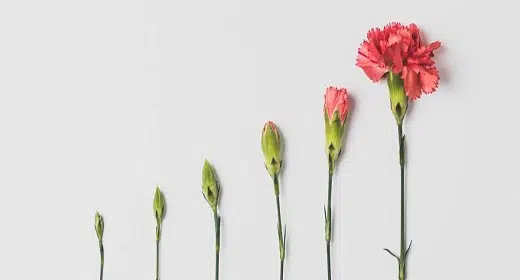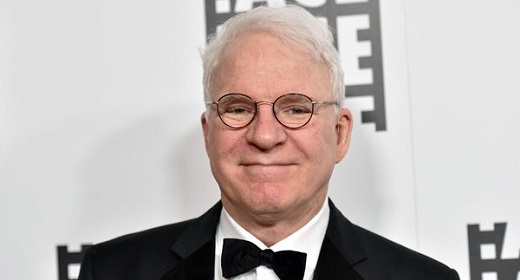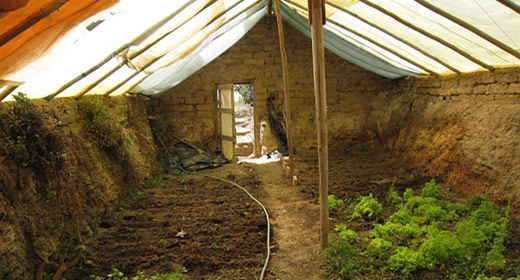by Tami Simon: You’re listening to Insights at the Edge. Today, my guest is Sharon Salzberg…
Sharon is a beloved meditation teacher and a New York Times bestselling author. She’s the co-founder of the Insight Meditation Society in Barre, Massachusetts, the host of the Metta podcast. And she’s created several audio meditation guides and courses with Sounds True, along with being a wisdom teacher, featured as part of Sounds True’s Inner MBA program, where she teaches on loving-kindness at work.
For Sharon, the practice of meditation and inner inquiry are deeply connected to working on real change in the world. Here, she talks about what it means to wholly give our hearts to what we care the most about and actions we can take right now. Here’s a whole lot of wisdom from Sharon Salzberg.
Sharon, I’m so happy to have this chance to talk to you about your book that came out a couple of years ago, Real Change: Mindfulness to Heal Ourselves and the World. I think real change is on the hearts of many, many people right about now. Tell me a little bit for you what the precursors were, what was the inspiration to write Real Change?
Sharon Salzberg: I think it came largely from two groups that I’ve felt very close to, that I often work with, teaching meditation. One was what we call caregivers. It’s people who care for people or animals or whatever—people who are often on the frontlines of suffering and bearing a burden that the rest of us are nicely avoiding in some way and often don’t even want to look at or acknowledge; and I just had such tremendous admiration for these people.
They range, the people I got to be with, from domestic violence shelter workers, to hospice nurses, to international humanitarian aid workers, to parents, to people taking care of their parents, and to managers who were actually sort of caregiving their staff. Or even people who in friendships and relationships tend to take that role, the giver, the person who’s offering [and] sometimes having a hard time receiving. I just really felt close to these people.
I felt, well, these particular techniques, these methods of meditation practice have supported me all these years and so many of the projects I was involved in were seeing if they could be of support to others in that kind of high-stress work.
The other people were just kind of the people who would come to learn meditation. And I saw progression very genuinely through the years, of how doing any kind of meditation, introspection, contemplative practice would really open people’s hearts, and they would genuinely become kinder and more compassionate.
The example I use all the time: people would say to me things like “I was out on the street, I was taking a walk, and somebody came up to me and asked me for some money. And I gave them a dollar, because that’s my habit. I just always give a dollar. But it was the first time I ever looked that person in the eye and realized that was a human being, just like me.” And I’ve heard some iteration of that story over and over again.
But I also saw those people not taking another step and maybe reflecting like, “What’s the housing policy in the city I live in?” If there’s so many people living on the streets, or what does the system look like that’s supposed to be supporting people helping them get off the streets?
The human relationship was growing, but not that sense of kind of a larger view of society and how change can really happen. And so, it was both those groups of people that I thought, “Well, here’s the book.” And I was very passionate about writing it.
TS: That comes through—I have to say, of all your books, I’m going to nominate Real Change. I’m not going to vote right now. I think it might be my favorite of all of your books.
SS: Well, thank you. I mean, it would be really sad if the first was the favorite. It was all downhill from then.
TS: That’s right. No.
SS: Although I’ve done some for you. They were really good, too.
TS: I know, I know. Your books keep getting better and better. OK, I pulled out five themes from the book that I thought we could talk about, that were particularly meaningful to me and that are really, in many ways, kind of the backbone of the book.
The first one has to do with what you call the stirring of agency. I wanted to start there for that person who’s listening, who says, “I don’t feel that powerful in the world today. I don’t feel like I have that much agency in the world today. It’s great to talk about change makers. There’s some mythic other person over there. I’m kind of flat out right now. I feel overwhelmed.”
SS: Well, I think it’s such a common feeling, and it’s episodic, too. I mean, as you and I speak, I think it’s really high, like the world just seems again to be falling apart. And one of the ironies about this book, Real Change, was it came out in the middle—not even the middle, kind at the beginning of the pandemic.
SS: When everything was sort of lending itself to the feeling of shut down and can’t do anything, and as they say, in the book, one of my icons in life is the Statue of Liberty. What I hadn’t really realized so much until working on the book was that she’s a woman on the move. She’s in mid stride. One of her legs is halfway up—one of her feet is halfway up. And that symbolizes a lot to me that, even getting to the place where she, as an icon is representing welcome, like “You have a home here, even you that no one else wants, even you can have a home here.” But she’s doing, she’s active.
And that reminds me over and over again to do the small thing that’s in front of me. It seems like nothing, seems like nothing could ever happen, but it matters. And I think it’s really significant. I think we do have agency. We can rewrite the story of our day, so that it represents our values. Instead of at work, for example, only being interested in the sale or whatever the metric is also being interested in how might that person have felt in conversation with me? What am I really relaying here?
TS: What’s interesting is when you talk about this stirring of agency and being mid stride, you talk about our day, today, the small things. And I think sometimes when we feel hopeless, or whatever, it’s like, we’re in some bigger, huge story that we’ve created instead of what’s right in front of us. So, it’s interesting to me that you brought it back down to what’s right in front of us.
SS: No, I mean, it’s just real, I mean, speaking of the word “real,” which is my perpetual book title these days, Real this or Real that. I think that’s a crucial distinction because we can all be in admiration of some way of life we will never attain or think of it as something relevant in days of old when saints walked. “OK, but not for me.” And the most important thing of all was that it be real—our values, the way we live, the choices that we get to make, that it really be coherent.
TS: OK. So, if “real” is your word right now, what does it mean to you? What does “real,” that word, mean to you?
SS: It means whole or integrated to me, that we’re not sort of affecting a persona that isn’t going deep in any way and that we’re not lost [in the] mindless perfectionism that is so much a part of structure of society—so that we’re never really working with what is; we’re just limiting ourselves for what isn’t.
TS: You’re right about how the Statue of Liberty is this image that you like so much. Do you have a bunch of Statue of Liberty paraphernalia all strewn around your apartment? Is that how it goes, Sharon?
SS: I do. I’m actually speaking to from my house in Barre, Massachusetts. And this is not a visual medium or I’d picked up the Statue of Liberty that is just behind me over there.
TS: Right.
SS: There are, the green, the rubbery things often. But I was tempted for a while in New York City—my apartment is on the second floor with windows out to a very busy street. And I was tempted to get a—not life-size for her, but life-size for a human being—replica and put it in the window, so people would go by on the second floor of a double decker bus, they would like go, “Oh, it’s just the Statue of Liberty.”
TS: Now, as a modern archetype, you’ve talked about being mid stride. What else is it about the Statue of Liberty that has turned you into a collector?
SS: [Laughter] Collector—my fine collection. Well, of course, it’s the compassion and it is that sense of inclusion. It’s not like “Eh, not you so much, go back home,” but “Even you, and if not for your sake, for the sake of your children, for the sake of your lineage, come, you can have a home here.” I think it was the most stunning statement I’ve ever heard in my life. Like, “Yes, you can belong too, even you.”
TS: OK. The second theme that I’d like to highlight: transforming anger to courage. And you talk about how we can harness the energy of anger. I want, if you would Sharon, [you to] talk directly to that person who right now is feeling quite a bit of anger at something that’s going on in the world. How do they harness that energy?
SS: Well, part of what I wrote about and what I tried to write about throughout, was really people, because they’re real. And I’ve learned so much from people, activists—who I really equate with caregivers—that I was speaking about before when I thought it was like those people, I thought, oh activists.
I use a lot of references to this woman, Mallika Dutt, in that chapter, who’s now a friend of mine. We met when we were just put on a panel together in some event. And she’s a tremendous advocate against violence against women and has been for a long time ever since. She is Indian American. She lives part time in India. And she was in India and a friend of hers was in a car accident or something like that, and was put in the hospital—where, in India, your family really comes often to take care of you. And the only beds they had open in the hospitals were in the burn unit.
So, she was taking care of her friends in the burn unit. And she saw a lot of women who were there because of violence against them, either husband, their mother-in-law, something like that. And it just turned her life around. And she was so infuriated, so enraged. And what she said on this panel was, “But I don’t know how to dial it down. I don’t know how to turn it off.” And she said, “You see it in all of our organizations, the way we speak to one another, the backbiting that’s going on, the enmity […]. Sharon, I just can’t go on in this way.”
So, she ended up leaving the organization, although she’s still tremendous advocate. She sort of studied shamanism and she became meditator. And she’s coming from everything in a very different way now. So, I think the first thing is, we have to honor what we feel. We can’t sort of put ourselves down for the rage, or whatever it is, and just start honestly saying I feel what I feel.
Then, to take something of an interest in the feeling, because if we have just a little bit of space—like if you’re meditating, let’s say—and the anger arises, rather than being consumed with “What I’m angry about and what I’m going to do about it,” and “How shameful it is that I feel it,” or “How fantastic it is I feel it,” it’s just like “What is anger? What do I feel in my body?” And what’s the movie of anger? Like just watch it play out, watch the thoughts, watch the emotions.
And what we see is that it’s a very complex thing, that it’s not just one feeling. There’s a lot of sadness in there often, a lot of grief, a lot of frustration, a lot of fear. And I think virtually always we will see there’s some sense of helplessness in there. And anger is what we pick up—they say this in Tibetan Buddhism. Anger is what we pick up when we feel weak because we think it’s going to make us strong.
TS: That’s a very powerful insight. Yes.
SS: Yes. And the strong part of it is the energy. We’re not passive. We’re not complacent. We’re on the move. It’s like, we’ve got this energy. We’re stirred. That’s good. But in the Buddhist psychology, they say, “Anger is like a forest fire, which can burn up its own support.” It can destroy the host, which is us.
We try to grab the energy without all the associated tunnel vision and sense of hopelessness and all of that. And that’s how we channel it. So, when I get there myself, if I’m sitting and that’s my experience, and I get to see that place of helplessness, that’s my signal. Do just one thing. Make one call, write one letter, talk to one person, whatever. It seems like nothing, but it’s the thing to do. And then, that’s the beginning of that flow of energy into action.
TS: It’s really helpful, Sharon. Can you give me an example for you of something that historically you felt really angry about and how you worked with that energy to take actions?
SS: I’m sure there are many. Again, the Buddhist psychology, anger and fear are considered the same mind state. Just two forms, anger being the expressive, energized, outward form. Fear being the sort of shrunken, frozen, imploding form, so I tend to get more frightened than angry overtly—that would be a kind of a stronger thing. So, I have to sit with the fear and find the anger within the fear and find everything else within that.
But I think that I’ve sort of learned to modulate my consumption of media, for example. And I could say that I had a childhood with a great many secrets in it. And so, probably the most sort of triggering or activating kind of environment for me is one where I feel I’m being lied to or there’s something that I’m not being told, and that my inner reality is not being supported. My inner perception of reality is not being supported by what I’m told.
When I watch certain politicians, for example, certain political leaders on TV, and I can tell, they’re just not speaking the truth, it’s just a bad environment for me. And I realized that I have to not just stay there in my experience, inner experience, but both modulate my taking in of media and deciding in what form that would be most useful for me, and also recognize that I have agency. I’m an adult. I can go check things out myself; I don’t have to be in the stew of what was real. That’s important—find out for yourself, investigate. And don’t doom scroll, which is my favorite new term of the century. Don’t just keep reading the same story again and again and again and again or listening to the same press conference again and again and again and again. You really have to moderate it.
TS: It seems to me in listening to you talk about stirring of agency in our experience, and here transforming anger, this feeling of helplessness underneath the anger—so, “I want to be strong”—that it requires a certain amount of perseverance, creative thinking, willingness to see what could I do.
Is there any point of power here, any point of action I can take? And that sometimes we don’t get there. Instead, we’d rather just rail in our anger or talk about how helpless we feel. But you’re really describing something else, which is, “No, we’re actually going to make real change. We’re going to find a step. Help that person that says, ‘Sometimes when I look out, I don’t see the step. I don’t see the step I can take. I don’t see it.’”
SS: Well, it’s an awfully hard path to do alone. I mean, that sometimes really does require a kind of community and you have to feel empowered. You don’t have to join every group or every action. But kind of suss out what seems, at least for now, most where you want to put your energy.
Also, there’s the recognition, as sad as it is sometimes, that you can’t do everything. It’s funny, because I’m doing my taxes right now, and going over all my charitable contributions for the last year. You can see the waves. It’s like, “Oh, those are all refugee organizations.” It’s like, “Oh, those are all literacy organizations.”
As time went by, in different months, we just moved in different ways. And we don’t necessarily have the ability to do everything at all. And so, we choose, and often that choices, I think, because we’re not going to be alone in that endeavor.
TS: Writing about transforming anger to courage, you talk about the realization you had at a certain point that some things are more than one generation fix. How did that perspective impact you and inform you? How does it inform you?
SS: I think it really, certainly opens the door to a different sort of patience. It’s a little bit like when I lived in Asia and the perspective was like, often, culturally, that one lifetime is a blip, like an in breath and out breath. It’s like, don’t be in such a hurry; it’s not going to all change in such a hurry. It’s a little bit like that. Standing in the Holocaust Museum in Jerusalem […] [you realize] this is not a one generation fix, or seeing some of what was happening between groups in Paris with Arab youth and Parisians.
And the story that’s in the book is about the cousin of a friend of mine—my friend happened to be in France when I was there. And so, we were at a cousin’s house talking about his antipathy towards some of that youth, and then realizing their parents were brought over here by my parents’ generation with the promise of the earth. You interpreted for us and those lands, and you helped us, and we’re going to take care of you. And [they] didn’t take care of them at all.
And so, there’s tremendous betrayal and humiliation and all kinds of things. And I realized, oh, the seeds of this are not like yesterday. This didn’t happen, in terms of origin, yesterday. It’s going to be awhile for this.
TS: So, Sharon, help me understand how when you hear people say, “This is the most critical decade we’ve ever been in and humanity’s fate lies in the decisions we make right here in the next 10 years.” Normally, I hear people talk about this in terms of climate change with that kind of intensity. And then I hear, “Well, this is more than a one generation fix. The roots of these problems are so deep. It’s going to take many, many, many generations to fix these things.” How do you put those two things together for yourself?
SS: Well, I think first of all, you have to start somewhere, even if it’s going to take many generations. And don’t put it off and don’t think it’s up to someone else. But when I was working with one of the people who runs a domestic violence shelter, she said, in terms of her own work, she said, “I’ve had to learn the difference between something that is critical and something that’s actually an emergency.” And it’s like we can have urgency without panic. And realizing that it just doesn’t happen.
Sometimes I just say to myself, “OK, what can you do? What can you do right now?” And it can come down to what seems like very small things, but it’s actually doing and it’s that movement. And I think that’s why I wrote that book Faith all those years ago, because, for me, faith meant getting off the sidelines right into the center of possibility. It’s like instead of saying, “Oh, that’s a great book, I’ll buy it from my cousin.” It’s saying, “I want to see what would happen for me if I tried this out.”
TS: Now, Sharon, say more about this. I think most people, when they hear a word like “faith” think that that’s the time you kick back in the chair. And you’re like, “I’m just going to leave it to divine intelligence to work this out.” You’re offering a very different perspective on faith.
SS: Yes. I think it is. I mean, I think it’s very much in line with the Buddhist tradition where you talked about faith is offering your heart or giving over your heart. So, it’s like, a verb. And it’s a progression. It might start out with kind of being dazzled by somebody or a teacher or a place, just had an incredible opening of like, “Wow, life is so much bigger than I thought it was.” But that’s considered just the beginning. And there’s lots of stages of verifying things to your own experience and doubting and wondering and questioning, which are considered really important.
But movement is what’s most essential, because otherwise, it’s just admiring something from afar. It’s like saying, “Hey, that was nice.” Kind of reminds me of one of my teachers, Manindra in India, who said to me once, “The Buddha’s enlightenment solved the Buddha’s problem. Now you solve yours.” It was perfect. It was like, “Oh, he thinks I can solve my problem.” That movement should try rather than hang back in defeat, or say, “Oh, yes, next year, or whatever.” That movement should try is what I was calling faith.
TS: Giving over your heart—tell me what that means? It’s a very powerful phrase.
SS: Yes. I mean, I think it’s, first of all, recognizing you have a heart, that there’s a core of your being and that its offering is extremely valuable. It’s not negligible, and it’s powerful. And that’s kind of a theme for life. I am devoted to trying to bring goodness into this world. And that’s more important to me than anything. And so, I won’t always succeed, but I don’t actually ever completely lose touch with that understanding. Maybe I forget for a while or I get overwhelmed or exhausted or something. But it’s like, “All right, that’s what my life is about.”
TS: So, I think for a lot of people, there’s a sense of, I’ve given over a portion of my heart to this, but I’ve kept a little portion over here that’s in reserve. I’m not really giving it over exactly. I’m just going to keeping it over here for times when I might need it for myself, something like that. What do you think about that?
SS: Well, I think that’s the quandary of generosity. Do we ever end up with less through giving? That’s something to check out. That’s the experiment. Are we depleted? Are we bereft? If so, it really wasn’t generosity, or was it something else, something more manipulative with more expectation or something like that.
TS: OK. Let me ask you a direct question. Have you 100 percent given over your heart? And if so, to what?
SS: I would say a little hard to say 100 percent. So, I’ll be a little cagey around that.
TS: I used math and everything there.
SS: That, in some funny way, goes back to the introduction to Real Change. Because I wrote the entire book pre-pandemic. I turned it in, I think it was December. It might have been early January of 2020. I went to California for a month. I came back to New York, March 2nd, and the world was seeming weird, very weird. And the book was supposed to come out in June, and they postponed it to September 2020.
So, a friend of mine was reading the book to excerpt it for something, and—prepublication—he said, “I like the book a lot, but I kept reading those examples and thinking, ‘That’s what made you anxious? Wait till you see what’s coming.’” So, I went to the publisher, and I asked, “Since you are postponing the pub date, could I write a preface to try to contextualize what I’d written and what was current reality?” And they said yes.
The overriding question for me in trying to write the preface was, what’s still true? My year looks nothing like I thought my year was going to look. I’m stuck in Barre, Massachusetts, instead of New York. I’m not traveling. I’m not seeing anybody. It’s like, expectations are shattered, people are terrified—especially in New York at that point; people were really sick and dying and losing people. “And what’s still true? What am I counting on? What’s holding me up? What can I rely on?” That was a tremendous process in and of itself.
What I used in that introduction as an example was the Buddha’s kind of quirky statement, quirky in a way that hatred will never cease by hatred. Hatred will only cease by love. This is an eternal law. And the reason I considered it quirky was because this is like Mr. Impermanence. All of a sudden, he’s saying this as an eternal law. And that is, of course, something to struggle with and try to understand. And there are so many situations in which I think, “Not here, come on. That can’t be so here, but I actually do believe it’s true.”
If we’re going to look for something intact in this world that’s not broken by all these changing circumstances, it can be something around love and our ability actually to love. And I think it’s a potential we have in any situation.
I’m going to keep going for a moment with this notion of giving over one’s—I’m going to use the word now “whole”—one’s whole heart. I’d like to know just inside you what that feels like and what that is as a practice, if you will.
SS: It feels like alignment, feels like harmony. […] Everything else is sort of trying to slip around it or avoid it, or it’s like hatred will never cease by hatred; hatred will only cease by love. “Come on. Look at how they’re behaving. You can’t mean here.”
Then, of course, there’s a lot of what I might call misconception about love that weakens you. It means you’re just approving. You’re not taking a stand. I don’t think it means any of that. But it can feel that way. So then, there’s a lot of fear and a lot of division. But when I get there, it’s just like, “All right, this is right.” And it doesn’t cost anything. That’s why I said that about generosity. It’s not like I’m left with less.
TS: I noticed, as you described that giving over of our whole heart as a kind of alignment, I sat up straight; I started feeling really good. And all that happened was I sort of took in what you were saying. I’m going to move on to the third theme that I’d like to pull out and highlight from Real Change, which is moving from grief to resilience. And in reading Real Change, I learned a lot more about you, Sharon, and your early life than I knew previously.
I didn’t know how much suffering was part of your early life. I wonder if you would be willing to share a little bit about that. And if you would, how grief in some ways formed you as a young person and even continues to inform your teaching.
SS: Yes. Well, actually, it’s interesting you say that, because Faith, of course, the book is like my autobiography. And so, it’s the most explicit and detailed rendition of my early life. And the audio is only available in Sounds True. So, that was really interesting.
Yes. I mean, the greatest sorrows of my life were in my childhood when my parents split up. They got divorced when I was four. My father disappeared. I lived with my mother. She died when I was nine. I went to live with my father’s parents, whom I hardly knew.
My grandfather died when I was 11. My father came back. You see, he hadn’t come back even when I went to live with his parents. He was really troubled and really out of it by then. And he took an overdose of sleeping pills maybe six weeks into that visit when I was 11, after his father died. And disappeared of mental health system where he lived for probably another 20 years whether in a nursing home or a hospital or VA hospital or something like that.
My family, being who they were—of course, I was told it was an accident: “He forgot he had already taken the pills. He took another pill.” Then when I was in college, all those years later, then I thought, “Wait a minute. You don’t sort of accidentally have a mishap with medication and end up in a psychiatric hospital, do you?”
I went to college when I was 16. I went to New York when I was 18. So, you can see the direct line. I was actually in my Asian philosophy courses as sophomore in college, where they were talking about the Buddha and they’re talking about, of course, his tremendous emphasis on suffering, the suffering in life. For me, it translated into, “You’re not so weird, you’re not so different. You actually belong. This is a part of life. It’s not just you.” So, it was like the most liberating thing I’d ever heard.
Then I heard that there were methods or techniques or practices you could do to be a lot happier. And I was going to college in Buffalo, New York. I looked around Buffalo, I did not see it anywhere. And the university had an independent study program. If you created a project they liked, you could go anywhere in the world theoretically for a year. And I created a project. I said, “I want to go to India to study meditation.” And they said, “OK.”
So, off I went. I left in 1970, the beginning of the fall semester. I began meditating in January of 1971. And that sense of belonging through the acknowledgement of suffering has been a theme of my life ever since because I see it everywhere, that we meet on a certain level. But it’s actually at that level spoken or unspoken that we really find one another.
Of course, Dipa Ma, who was my teacher who told me to teach—and that was in 1974, when I went to visit her in Kolkata, because I was coming back to the states for what I was convinced was going to be this very short visit before I went back to India for the rest of my life. She said, “When you go back, you’ll be teaching.” And I said, “No, I won’t.” And she said, “Yes, you will.” I said “No, I won’t.” And she said, “Yes, you will.” I said, “No, I won’t. That’s ridiculous. I can’t teach.” And then she said, “You really understand suffering. That’s why you should teach.”
That was my blessing. And, of course, the funny part is, looking back she didn’t say, “Your realization is so vast, you should teach, or your scholarship was so extraordinary.” It was like, “You really understand suffering, that’s why you should teach.”
TS: OK. Let me ask you a couple questions first just quickly here. You went to college when you were 16, is that because you were like a super smarty pants or something?
SS: I was smart, I was determined, and also, I was in the New York City public school system where they did tend to have people skip grades.
TS: OK. So, here, Dipa Ma says, “You’re going to teach because you understand suffering.” And I’m going to ask you just a really basic 101 question here, Sharon, Buddhism 101. Somebody who says, “Of course I’ve heard people say the Buddha said, ‘All life is suffering.’ I don’t get it. I mean, sure, they’re suffering, but there’s a lot of things that aren’t suffering. I don’t get it. Why say all life is suffering? I don’t get that.”
SS: Right. Well, in that sense, in that quotation, it doesn’t mean suffering as dreadful pain or trauma or the ways we might use the word. I mean, that is a part of life. And that is something we experience in different degrees. But there’s also a kind of suffering that’s not so intense and immediate. It’s almost kind of like poignancy. It’s like, “I don’t know how this happened. I am asked to enter my year of birth online and I have to scroll for an hour and a half. And don’t understand—where did my life go?”
And there’s even a more subtle level where it’s sort of like, you have a friend and you do anything to have them suffer less. And you can’t make it so. No one’s invented the chip where we can implant it in someone else’s brain while we’re holding the remote control. And we can say, “Cheer up, or stop drinking.” Life’s not like that. And so, the kind of layers and layers and layers of subtlety to it.
TS: So, I’ve heard this distinction between you could say avoidable suffering, suffering we don’t really have to be having and suffering that’s unavoidable. And I’m curious what you think of that distinction and how we know in any moment in our experience. Is this avoidable? Could I avoid this? Is his secondary suffering or is this just pure real suffering?
SS: Well, they’re all real, I think, unfortunately. They all are. But I think, yes, I think we can know. I mean, people struggle, I struggle, everyone struggles with the words trying to figure it all out. Some people, I think it was probably Stephen Levine originally who said, “Pain is inevitable, but suffering is optional,” or it depends on how you’re using the words.
And sometimes I call it as the suffering happens, it’s like we feel what we feel. Or one of my favorite sayings is, “Somethings just hurt.” They hurt. It’s not because you have a bad attitude. It’s not because you need to elevate your thinking and it’s not because you’re resistant. Something’s hurt. But what we don’t need is extra suffering. I think we can tell the difference. I can tell the difference.
TS: That’s my question. How can you tell what’s extra suffering?
SS: Well, I sort of know my patterns so well. It’s like when I have the thought, I’m the only one who ever experiences this in whatever form, maybe not so elemental, but it’s there. I feel isolated. I feel I’m the only one. “No one can ever understand this. No one could ever conceive of what I’m going through.” That’s an add on. That’s an old, old tape or a kind of shame. “I should have been able to stop this. I’ve been meditating for an hour. I’ve been meditating for three weeks. I’ve been meditating for 50 goddamn years. Why is this still arising?” Which is also forgetting where our power really lies, which is not in the question of whether something comes up or not. It’s a question of how we deal with it.
There are certain things that can just recognize that or something great happens, the wonders, beautiful, fantastic thing happens and that voice that arises in me, they’ll say, “Something is going to happen again.” Or “It can’t be real,” or whatever it is, to diminish the experience.
A question of skill is really how you relate to that voice. That’s the years of training. It’s like, if you say that’s your inner critic, sometimes we say give it a voice, give it a wardrobe, give it a persona, give it a name, and then see how you relate to it because the relationship is everything. So, if you’re that voice that says, “It’s never going to happen again,” can you say, “Have a seat, have a cup of tea, chill. Just don’t work so hard, you crazy critic, just like, be at ease.”
TS: I want to dig in here a little bit and I don’t want to get too bogged down in the language. However, I have worked with different teachers at Sounds True, who are very much like the point of the path is the end of suffering. And that is possible. It is possible to live without suffering at a certain point. And yet, when I hear you talk about some things just hurt, once again, I mean, maybe there’s no way to avoid getting into the language of it all. Maybe what that teacher is trying to point to is, yes, there’s pain, but […] you just let the heart be there. How do you see it, Sharon?
SS: Well, I think it’s so different when we’re not lost in those add-ons, that you could, I think, genuinely say it’s a completely different experience, even though it’s not meant or a little tinge of bitterness or something may arise, but you’re not invested in it. You’re not lost in it. You’re not taking it to heart. It’s not consuming you. That’s a very different experience.
But I really take a stand on some things just hurt, because I’ve seen the opposite so much where people are confounded. “I’ve been meditating all this time.” And then they tell you some horrible thing that happened. And then, “I don’t understand why I’m not calmer because that was horrible.” You have been through a genuine tragedy. And why are you blaming yourself for feeling something about it? I’ve seen a lot of that, too.
TS: Yes. OK. So, I have two more themes I want to touch on and then a very important topic I want to cover too. So, I’m going to keep this train, this train, choo-chooing here, which is allowing joy. This really spoke to me on the path of being a real change maker. You write about how if we titrate, if we don’t just stay with what’s hard, that it enables us to persevere. So, I wonder if you can speak more about that and the role of joy.
SS: Well, I think titrating, interestingly enough, is also an element in things like trauma therapy. It’s realizing that it’s almost like saying, energy is a genuine commodity or resource, and that if you sort of stay with what’s hard endlessly, you’re going to get exhausted. And it’s just not going to be the optimum environment in which to learn something or move on or develop a different relationship.
This goes back to kind of an understanding from the Buddhist teaching where he said that suffering itself is not the point. Suffering isn’t redemptive. Suffering is not grace in that system. But how we relate to suffering could be and are we with what’s hurting, with compassion for ourselves, for example, rather than judgment or criticism.
We need energy to do that. If you’re exhausted, you’re not going to get there. And so, we have to sort of balance ourselves to the best of our ability all along. And that’s really important. And part of that is taking in the joy—and anybody who knows activists knows how hard it is or even caregivers, the ones who care for others to sort of receive is not that easy and to sort of feel the abundance of life and the joy that’s available. But if we don’t do that, then it is exhausting. I mean, the day is exhausting, between everything we need to do then and the ways we kind of get beaten down and frustrated and we need some balance.
TS: Do you have a practice yourself that’s like Sharon Salzberg’s “I’m going to open to joy” practice?
SS: Oh, to joy?
TS: Yes.
SS: Well, I mean, both from the Buddhist point of view and being a New Yorker, it starts with what’s looking at what’s holding me back. “This isn’t as good as it was last year,” or whatever the thought is. “Or this could be better,” or “I wish I had more time to look at the sunset, it’s not fair,” and being able to release those thoughts and remind myself just be here with what is good.
A lot of it has to do with simple things like sunsets or the sky, something that evokes a sense of space, not being amused by people because we’re also kind of funny. Taking satisfaction, something like writing. “Wow, I wrote that. Look at that.” Because we get so afraid—me too—like, “Oh, that’s boastful or that’s egoic or that’s going to strengthen my ego or something like that.” It’s just like, relax. Enjoy it.
TS: Yes. OK. The fifth theme, living by the truth of interconnection. And what I wanted to ask you about with this point in terms of Real Change is that it feels to me that it’s not that hard to intuit, to see, to appreciate our interconnection. It’s not that hard.
TS: You use the example of looking at a tree and seeing the sky and the roots. I think it’s easy to get it, let alone if you’ve taken some kind of hallucinogen or something. This web of life, we’re all connected. People get it. But actually living by it, translating that, especially into the structural systems that we live in and all of the lack of equity that is part of the structures of our society, this is where I’m trying to understand for you how you bring it down to the earth of how you actually live your life, not as a philosophical intuition.
SS: Well, that’s why you and I ,when we’ve talked about the workplace, I’ve said that my favorite question in going to teach in the workplace is, how many other people need to be doing their jobs well for you to do your job well? Because really, if it were not for the engineers, or the house cleaners, or whatever it is, our lives would not happen in such a smooth fashion.
Maybe for me, some of that came also from the work with caregivers, because they’re often hidden. They’re like the hidden heroes. I would look at those women—often women, not exclusively, but largely women—working in the domestic violence shelters and think, “Boy, if they weren’t doing their job, this whole society would fall down.” But nobody thinks about them or pays them enough or appreciates them.
I make it a point to do that reflection. Like with Thich Nhat Hanh. Every time I saw him, I think he held up some object in the air and would do this exercise, like he would hold up a piece of paper and say, “Now see the cloud.” Because as you trace back, what makes this paper? It’s the elements that go into it.
Or the last time I saw him, he held up a sunflower. This was in New York City. And he said, “Now, see all the non-sunflower elements of the sunflower.” Once he held up a string bean, and you sort of imagine the farmers planting the seed and the creatures who live in the soil and who harvested the crop, who transported it, who sold it. Suddenly you look at that string bean, it’s like, half the earth is there.
I’ve kind of learned to actually do that as a reflection, do that as an exercise. Especially in a non-equitable society, talking to people who are maintaining the infrastructure that I am counting on but I never think about really—unless (and this is all a long time ago, because I haven’t been anywhere in two years) I’m on a train and suddenly, it gets stuck between DC and New York, and suddenly, the people who do the road repair and the train repair and they’re very important to me, but otherwise, it’s like, they’re invisible.
And so, both through lovingkindness toward neutral people, and just that reflection, I really tried to remember how intricate this world is and how many people I’m counting on for my happiness, for my well-being.
TS: OK. Now, you mentioned in the very beginning of our conversation that you wrote Real Change for two types of people: the caregivers; and then the second type, just a general person, that kind of person who after doing compassion practice walks out, sees a homeless person, and traditionally would have just given a dollar. Now, looks them in the eye but then has a set of questions that says, “Wait a second, I’m going back to my, I don’t know, my really nice New York City expensive apartment, and this person isn’t. And I just spent an hour meditating on our interrelatedness and our interconnection, and now, I don’t know what to do with myself exactly. I think I’m going to read Sharon’s book.” OK. But what’s the deeper, structural, real-change process that this individual could start embarking on, or at least looking into inquiring? How do you see that?
SS: Well, I do think it’s a question of inquiry. It’s like learning, I want to set out to learn. I don’t know anything about the housing policy of my city. I don’t know anything about what happened with deinstitutionalization of mental health facilities, which used to be very big thing in my life. How many resources were ever allocated for people to live in a community as opposed to just closing down the hospital putting them on the streets?
I don’t know anything about this history. You think, “I want to find out. I just want to learn what is going on here. Where are my tax dollars going? Who’s making these decisions? How many people vote in those elections for these local governance roles?” Then see where your heart leads you or see if there’s something that you do want to participate in, but it starts with even caring to know and not having it stop. It’s just the level of the human-to-human connection, because that is extraordinary and it’s very important. But in some ways, it’s almost like the beginning.
TS: That caring to know, and then it seems like taking actions and engaging our analytical capacities, […] it’s work. It’s real work what you’re describing.
SS: Yes. But it’s almost just go deeper, look for causes and conditions to the degree you can discern them, you can find them out. One of the stories I tell in the book, it’s about this conference I was at where somebody was talking about teaching literacy in Texas, in prisons, and it was like noble and amazing. These places, I mean, I’ve been teaching occasionally in prison; it’s not an easy place to be.
On one level, it was all great and it was all very noble. Then somebody in the audience stood up and said, “I don’t know how you can be doing that in Texas, and not in any way confronting the racism that’s at the core of the criminal justice system there.” And there was a moment that was like, “Oh,” because of course, that was also true. And we want solutions. And I’m not putting down the efforts of the people teaching literacy because I think that was extremely good and hard to do. But if we actually want solutions, we have to look deeper. We have to look into causes and conditions. Otherwise, we’re just going to go round, and round, and round, and round.
TS: OK. The last thing I wanted to ask you about is something you already touched on, and it was when you were talking about joy and talking about what you might need to let go of. I’m wondering, in general, to be a real change maker, what your thoughts are about what we might need to let go of.
SS: Oh, well, isolation. I think a certain kind of certainty as well. I think that the spirit of inquiry is really important, and we see so much positionality. […] I think we need to let go of some extremes and understand a place in the middle. So, when I say let go of positionality, I don’t mean let go of principle and a sense of right and wrong, because I think there is right and wrong. You don’t have to be highly judgmental about it or consider yourself always right and the other people always wrong.
But I think there is. There are actions. There are beliefs. There are ways of being extremely harmful and damaging. And I think that my goal is not to give credence to them as though, well, all beliefs are just beliefs; but, at the same time, to understand causes and conditions that people come to understandings in different ways and that it sort of comes back to me some nice this quotation from Maya Angelou, who said something like “When you know better, you do better.” And that it’s kind of understandable how each of us in different times, in different ways, gets stuck, and that we need to know better in order to do better.
TS: Now, Sharon, just to conclude, I hear you’re working on a new book from Real Change, your previous book to a new book called, Real Life. Can you give us just a brief preview, what’s Real Life going to be about?
SS: Real Life. Real Life is about moving from contraction, narrowness, to expansion or openness and is based in lockdown. I watched this program called Saturday Night Seder, which I absolutely love. I don’t know if it’s still up on YouTube or not. But it was my Seder of the year because I wasn’t going anywhere. And it reminded me that if you take all of that symbolically and not in terms of geopolitics or anything like that, the word that is translated as “Egypt” actually means “a narrow place.” So, the whole Seder is symbolic from moving from being locked in and constrained and narrow to being open and free. And so, it’s all about that. I always see that that progression, it starts and ends with the Seder.
TS: Beautiful.
SS: Thank you.
TS: Well, we’ll talk again about Real Life in a couple years, God willing.
SS: Yes.
TS: Yes. I’ve been speaking with Sharon Salzberg. We’ve been talking about Real Change. She’s written a book with that title, Mindfulness to Heal Ourselves in the World with Sounds True. Sharon’s also written a book on the force of kindness about lovingkindness meditation. She’s created several audio programs with us, including the audio book of her book Faith, an online course with Joseph Goldstein on insight meditation, and she’s also one of the wisdom teachers participating in Sounds True’s Inner MBA program, teaching on lovingkindness at work. Sharon, always great to be with you. You increase my IQ—know better to do better. Thank you. Thank you so much.
SS: It’s always great to be with you, truly.
TS: Thank you for listening to Insights at the Edge. You can read a full transcript of today’s interview at SoundsTrue.com/podcast. If you’re interested, hit the Subscribe button in your podcast app. And also, if you feel inspired, head to iTunes and leave Insights at the Edge a review. I love getting your feedback, being in connection with you and learning how we can continue to evolve and improve our program. Working together, I believe we can create a kinder and wiser world, SoundsTrue.com: waking up the world.










































